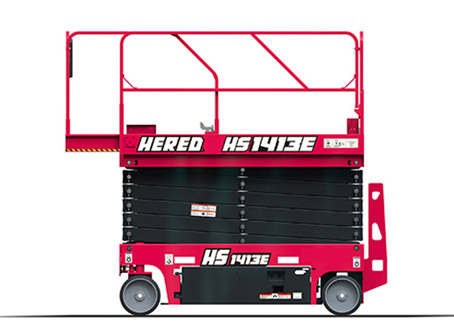Evaluating Aerial Lifts for Indoor Use
Every job has its own unique challenges. For those who need to use an aerial lift, the task becomes more difficult when working in tight spaces and around obstacles and/or obstructions if the correct lift is not selected.
These limitations often abound in indoor applications, which can be filled with doorways and narrow aisles to walk through and objects to move around. In some cases, stairs and elevators may even need to be climbed. Outdoor applications can be equally challenging, including narrow lots, overhead electrical hazards and even traffic and pedestrians. Fortunately, today's market offers a wide range of machines to meet many different workplace needs.
Articulating boom lifts
Articulating boom lifts provide up and down clearance to help clear a variety of obstacles. For job sites where floor loads may be limited, most scissor lifts and vertical mast lifts would be ideal because they combine low floor load pressures with compact, low-profile dimensions.
Scissor lifts
Scissor lifts can be a cost-effective workhorse for compact or high-capacity, vertical-access-only jobs. But there are many jobs that these high-productivity machines just can't handle. Whether you're moving up and down machinery or structures that require an articulating boom, accessing work areas that require a narrow chassis, or spanning large gaps that require telescopic boom capabilities, there's an ideal antenna for almost any job.
To ensure you have the right lift for a particular application, start with a risk assessment to clearly identify the task, including its location and timing. Be sure to consider the limitations of the job site, ground conditions, site access and distance from the public or other workers. Identify any risks associated with tasks specific to the MEWP (Mobile Elevating Work Platform), such as the location where the work is to be performed, the nature of the MEWP or the personnel, materials and equipment to be carried.
There are many lift manufacturers that can provide more efficient and safer operations depending on the situation and the availability of options. But regardless of availability, never choose a machine that does not meet all of the objectives identified through the risk assessment.
Evaluating Indoor Applications
When evaluating aerial lifts for indoor use, the first thing to consider is access to the job site. Measure the dimensions of doorways and aisles," he advises. Check for overhead obstructions that must be negotiated.
Many times the actual job site isn't the biggest limiting factor in machine selection. Access [to the job site] is an important issue. For example, a task may require a machine that can reach great heights, but consider its collection size to ensure it can go through doorways and turn around on its way to the work area. Often, the question is 'how do I get to the job site' versus 'how do I work once I get there.
When working indoors, the issue of fuel source must also be addressed. Battery power is usually the best source of power for confined space work.
However, the job site may or may not have electricity available to charge the motor, so you may need an LPG or hybrid power source. If liquid propane is allowed, then it is possible to introduce machines with dual fuel power. If you want to get more information about the best aerial lifts for sale, welcome to contact us.





